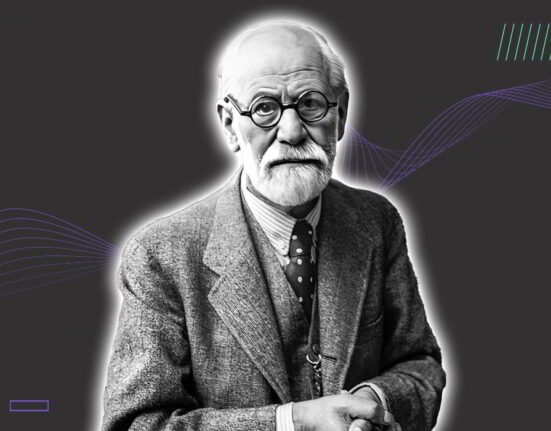The Truth About Cannabis
Cannabis, marijuana, ganja, weed, hash, CBD are some of the terms that we have been hearing in media for quite some time now. Well, we all know that they are drugs but do you know that they are not really the same thing? Will you be surprised if I tell you that Cannabis is actually a flowering plant? Yes, it is! It has three popular species out of which Cannabis Sativa & Cannabis Indica are the most popular ones and used to make many cannabis-based products.
Terms you should know
Marijuana is one such product of Cannabis. It is greenish-gray in color and is produced from the dried flowers of the Cannabis plant. It is known by many slang terms like a weed, herb, pot, grass, bud, ganja, and Mary Jane. It is often consumed by smoking or vaping.
Another common form of cannabis is hashish, known by many street names like hash, gangster, boom, and hemp. It is stronger than marijuana & is made from the resin of the cannabis plant. It is consumed orally through edibles like tea, vaped, or smoked.
Some other forms in which cannabis is produced are hashish oil, cannabis oil, edibles, tinctures/sprays, and topicals (creams/ lotions).
Therefore, Marijuana and Cannabis are not the same. Cannabis is an umbrella term under which many cannabis-based products like marijuana & hashish are included.
Marijuana & hashish are considered to be psychoactive (mind-altering) drugs and more specifically, hallucinogenics. Hallucinogenic is a substance which is capable of producing altered perceptions (sights, sounds, time, touch) & feelings.
How does cannabis produce its effects?
Actually, cannabis contains more than 100 active compounds or chemicals called cannabinoids that are responsible for the effects that consuming the plant provides. The two most commonly found cannabinoids in cannabis products are THC and CBD.
Tetrahydrocannabinol or THC is the main psychoactive substance used to produce the ‘high’ or ‘intoxicated’ feeling. It is the main chemical present in Marijuana & hashish but with a higher concentration in hashish.
Unlike THC, Cannabidiol or CBD doesn’t produce psychoactive effects but can block or reduce some of the effects that THC has when present in a product with at least a 1:1 ratio of THC to CBD. CBD oil is a popular CBD product which has a relaxing or calming effect. It can be taken in many ways like drops, capsules, edibles, lotions, sprays, vaped, or smoked with other substances.
Our body naturally produces some cannabinoids known as endogenous cannabinoids such as anandamide through the endocannabinoid system. They act as neurotransmitters (chemical messengers in our nervous system) and affect brain areas involved in pleasure, memory, thinking, movement, concentration, coordination, and sensory & time perception. Now, THC’s structure is similar to endogenous cannabinoids like anandamide and due to this similarity in structure, the neurons that respond to natural cannabinoids also respond to THC in the same way and therefore, disrupt the normal brain function.
Immediate effects of cannabis use
Because of the brain regions affected by THC, a person using cannabis experiences the following immediate effects-
- a feeling of euphoria, known as high
- altered perception, e.g. the time may slow down
- memory problems
- dry mouth
- dizziness
- vomiting
- an increase in appetite
- relaxation
- feeling more talkative
- increased heart rate
- impaired coordination and concentration (therefore, DON’T DRIVE AFTER CONSUMING MARIJUANA)
- negative experiences like anxiousness & paranoid thoughts
- toxic psychosis (in high doses)
These effects are felt within minutes and reach their peak in 10-30 minutes and may linger for 2-3 hours. Edible forms, however, may take more time to show effect and also last for up to 12 hours!
What is the legal status of Cannabis in India?
The National Policy on Narcotics and Psychotropic Substances bans the sale and consumption of all cannabis products that are produced from flowering and fruiting tops of the plant (excluding seeds & leaves). Because marijuana is prepared from dried flowers, so it is banned in India and any other cannabis-based product that is prepared from the flowering top of the plant has the same fate.
But what about Bhang?
Read the first line of the above paragraph carefully again. This is an interesting point because while cannabis and marijuana are illegal for sale and consumption in India, Bhang is not! Because it is prepared from the stem and leaves of the same plant. Therefore, the sale and consumption of Bhang are tolerated as long as it is prepared only from the leaves of the plant, and no other parts of the cannabis plant are added. There are even many governments authorized Bhang shops in India.
Why is there so much fuss about the legalization of Cannabis?
There is much debate in India and around the world regarding the legalization of cannabis and marijuana.
Peter Tosh has even written a song ‘Legalize it’s asking for the legalization of marijuana! Its lyrics go like-
Legalize it
Don’t criticize it
And I will advertise it
It’s good for the flu
Good for asthma
Good for tuberculosis
Even numara thrombosis…
There is a widespread belief that cannabis is an effective treatment for many conditions. At the same time, there is a lack of scientific knowledge on its effects. So let’s look at the scientific evidence for weighing the medical benefits of cannabis against its associated health risks.
Medical benefits of cannabis
- Mental health– A summary of research findings provided by Khan et al. 2020 shows that CBD and CBD containing compounds help alleviate symptoms of cannabis-related disorders, schizophrenia, social anxiety disorder, Autism Spectrum Disorder (ASD), and Attention Deficit Hyperactivity Disorder (ADHD). However, weaker evidence exists for insomnia, anxiety, bipolar disorder, posttraumatic stress disorder (PTSD), and Tourette syndrome.
- Pain– Cannabis has analgesic properties; therefore, it is effective in relieving chronic pain especially neuropathic pain (caused by damaged nerves) and fibromyalgia (musculoskeletal pain). A large review study by The National Academies of Sciences, Engineering & Medicine (2017) found that adults with chronic pain, who are treated with cannabis or cannabinoids, are more likely to experience a clinically significant reduction in pain symptoms.
- Nausea & vomiting– Cannabis has antiemetic properties and therefore, is effective in treating nausea and vomiting related to cancer chemotherapy. The review study by The National Academies of Sciences, Engineering & Medicine (2017) also found that in adults with chemotherapy-induced nausea and vomiting, oral cannabinoids are effective antiemetic medications. Cannabis can also be effective in treating Hyperemesis Gravidarum (HG) which is characterized by severe nausea and vomiting, weight loss, dehydration, electrolyte imbalance in pregnant women. A study by Koren & Cohen (2020) on 4 women with HG who were not helped by any other antiemetic medications found significant improvements in their symptoms after cannabis use. However, the potential effects on the fetus need to be considered.
- Memory related problems– Although cannabis produces acute memory impairment during intoxication; THC & CBD have some opposing effects. Studies suggest that CBD has no effect on cognition in healthy individuals, but can improve cognitive processes including attention, executive function, working memory, and episodic memory in various pathological conditions including acute THC intoxication (Osborne et al. 2017; Romer Thomsen et al. 2017; Zhornitsky and Potvin 2012). Therefore, CBD is considered as a potential treatment for cognitive impairments resulting from schizophrenia & Alzheimer’s disease.
- Parkinson’s disease– A study done in Israel shows that Parkinson’s sufferers showed decreased tremors and pain and improved sleep when smoking marijuana.
- Epilepsy– Research from New York University shows that epileptic seizure sufferers who were not helped by any pharmaceutical medications responded positively to CBD.
- Glaucoma– Glaucoma is an eye disease that can cause blindness. National Eye Institute of US states that marijuana when smoked lowers intraocular pressure in the eyes for a few hours, thereby serving as an effective short-term treatment for glaucoma.
- Gut– Researchers from the University of Nottingham found that patients with gastrointestinal diseases like Crohn’s disease and ulcerative colitis can benefit from marijuana as it can block the compounds that increase intestinal permeability, thereby, preventing bacteria from entering the intestine and thus, reducing symptoms.
- Alcohol use disorder (AUD)- Although dual use of alcohol and cannabis has been associated with AUD development, characterized by increased severity, and longer duration (Midanik et al. 2007); cannabis can counterbalance the immune effects of harmful alcohol consumption which further weakens the severity of illness and preserve organ function (Hua et al. 2020).
Is Cannabis really a miracle plant?
Cannabis is not a miracle plant. Despite its medicinal benefits, its chronic use has been linked with the following problems-
- Cancer– Review study done by The National Academics of Sciences, Engineering & Medicine (2017) found that although smoking cannabis doesn’t increase the risk for certain cancers in adults there is modest evidence that cannabis use is associated with one subtype of testicular cancer.
- Respiratory disease- Smoking cannabis regularly is associated with chronic cough & phlegm production but it is unclear whether it can lead to asthma or worsened lung function (National Academics of Sciences, Engineering & Medicine, 2017).
- Altered immune response– Alshaarawy, 2005-2016 found positive associations between heavy cannabis use, and total WBC and neutrophil counts which might be associated with increased susceptibility to infections.
- Addiction– Cannabis is addictive because THC activates our brain’s reward system to release a neurotransmitter called dopamine which is responsible for the feelings of ‘pleasurable high’ associated with drug abuse. With long-term use of cannabis, these changes in the brain can lead to cannabis use disorder (CUD). In this, a person experiences uncomfortable withdrawal symptoms like irritability, mood changes, insomnia, cravings, restlessness, and decreased appetite, when not given the drug.
- Priapism– Priapism is defined by an erection that persists for longer than four hours that is not related to sexual stimulation which can lead to damage to the penile tissue & even permanent loss of sexual function. A case study by Montgomery et al. 2020 suggests that cannabis use can cause priapism as in the case, all other well-established causes of priapism were ruled-out and it was concluded that it was due to cannabis use.
- Mental health problems– Cannabis use is likely to increase the risk of developing schizophrenia & other psychotic disorders, though a history of cannabis use in individuals with schizophrenia and other psychoses can improve cognitive performance on learning & memory tasks. In individuals with bipolar disorder, daily cannabis use can lead to greater symptoms than non-users. Heavy cannabis use is also related to more suicidal thoughts & a greater risk for developing social anxiety disorder (National Academics of Sciences, Engineering & Medicine, 2017).
- Low birth weight of infant– Smoking cannabis during pregnancy is linked to lower birth weight in the offspring (National Academics of Sciences, Engineering & Medicine, 2017).
- Increased risk of road accidents– Because cannabinoids impair judgment, motor coordination, and reaction time, even acute cannabis consumption is linked to increased risk of motor vehicle collision (BMJ, 2012).
So, is Cannabis good or bad for health?
There is scientific evidence that demonstrates both. And there are many states in the US where marijuana has been legalized for medical as well as recreational purposes. It will be safe to say that the benefits of cannabis should be weighed against its harms. For E.g. if a person wants to consume marijuana for pain relief and also has a history of mental health problems, then its use should be carefully considered or even avoided. In cases where, benefits outweigh the harms, e.g. in HG- if the pregnant woman is not helped by any antiemetic medicine then using cannabis can be the only safer alternative as hyperemesis can even risk the life of the fetus. In the end, we need more scientific research to understand the effects of cannabis as the existing research is still contradictory and ambiguous.












Leave feedback about this